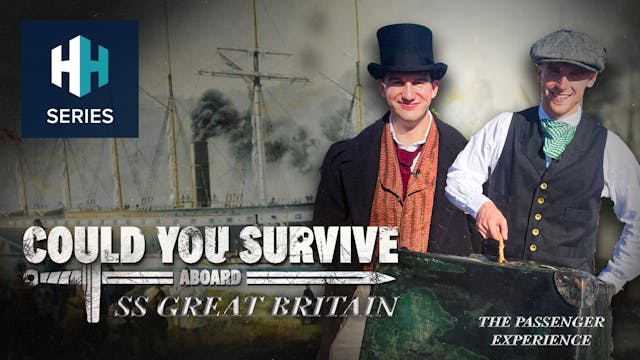As new technologies emerged throughout the 19th century, and the use of water and steam power became commonplace, millions of rural workers, including thousands of children, descended on the growing industrial towns to work in mills and factories. Northern cities such as Manchester, Leeds and Sheffield became industrial powerhouses, exporting textiles such as cotton, wool, silk and linen worldwide to Britain's expanding empire. As well as producing textiles, these establishments would generate enormous profits for a new class of industrialists and entrepreneurs.
But what was ordinary life like for a Victorian factory worker? What were the conditions and safety standards like in a mill in Victorian England? And how did their lives compare to ours today?
In episode one of this two-part series, History Hit presenters Luke Tomes and Louee Dessent delve deep into the historic spirit of the 1800s industrial revolution, filling the shoes of a wealthy Victorian industrialist and a poor Victorian labourer respectively at National Trust's Quarry Bank Mill in Cheshire, built in 1784 by the renowned entrepreneur Samuel Greg.
Together, using contemporary accounts and testimony, they'll explore how your experience of the industrial revolution could be very different, depending on what you did for a living... and your place in society.
So the question is, could you survive as a Victorian factory worker? Watch the video to find out!
Up Next in Surviving the Victorians
-
Could you Survive as a Victorian Work...
As new technologies emerged throughout the 19th century, and the use of water and steam power became commonplace, millions of rural workers, including thousands of children, descended on the growing industrial towns to work in mills and factories. Northern cities such as Manchester, Leeds and She...
-
Could You Survive On the SS Great Bri...
What was working on SS Great Britain really like? Isambard Kingdom Brunel's SS Great Britain is undoubtedly one of the most important historic ships in the world. When she was launched from Bristol by Prince Albert in 1843, she was called 'the greatest experiment since the creation'. No one else ...
-
Could You Survive SS Great Britain? P...
When she set out on her first voyage to New York in 1845, SS Great Britain was the largest passenger ship ever built, and she would go on to transport over 30,000 people during her 41-year-working life.
For most of that period, the ship carried emigrants between Liverpool and Melbourne on the n...




5 Comments